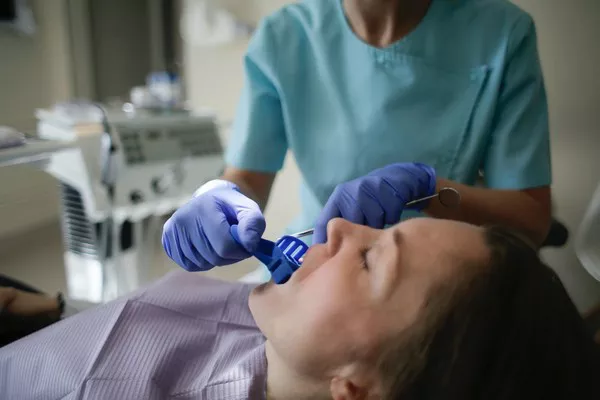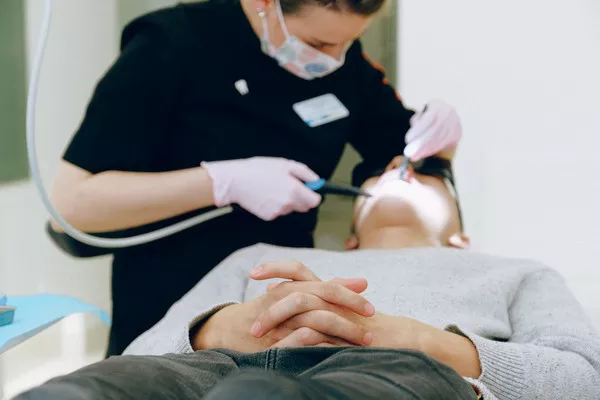The color of your teeth can be a source of concern or curiosity. Many people wonder why their teeth appear more yellow compared to others who seem to have naturally whiter teeth. Understanding the reasons behind this can help you take better care of your teeth and make informed decisions about potential treatments. This article explores the natural variation in tooth color, the influence of dentin, the role of enamel thickness, the impact of genetics, age-related changes, lifestyle factors, and the importance of oral hygiene. It also discusses professional treatments and home care tips to help you achieve a brighter smile.
Natural Variation
Natural Tooth Color
Teeth color varies significantly among individuals, ranging from yellow to grayish-white. This variation is entirely normal and is influenced by several factors. Some people naturally have whiter teeth, while others have teeth that are more yellow or even slightly gray. This natural variation is due to the intrinsic properties of the teeth and the tissues that compose them.
Individual Differences
The natural color of your teeth is primarily determined by the color of dentin, the second layer of the tooth, which can vary among individuals. The thickness and translucency of the enamel, which is the outermost layer, also play a crucial role in how the dentin’s color is perceived. Additionally, lifestyle choices, dietary habits, and oral hygiene practices can influence the external appearance of teeth, contributing to variations in color.
Dentin Influence
The Role of Dentin
Dentin is the layer of the tooth located beneath the enamel. It is naturally yellow in color and has a significant impact on the overall appearance of your teeth. Dentin is a dense, bony tissue that provides support to the enamel and forms the bulk of the tooth’s structure.
Dentin’s Yellow Hue
Since dentin is naturally yellow, it affects the color of your teeth by shining through the enamel. When the enamel is thin or worn down, the yellow color of the dentin becomes more visible, making your teeth appear more yellow. This intrinsic yellow hue is a major factor in why some people have naturally yellow teeth despite maintaining good oral hygiene.
Enamel Thickness
Importance of Enamel
Enamel is the hard, protective outer layer of your teeth. It is translucent, meaning it allows some light to pass through it, which can affect the appearance of the dentin beneath. The thickness and translucency of the enamel play a crucial role in determining the visible color of your teeth.
Enamel’s Protective Role
When enamel is thick, it provides a stronger barrier and tends to reflect light more, making teeth appear whiter. Conversely, when enamel is thin, it is more translucent, allowing the yellow dentin to show through more prominently. Various factors, including genetics, diet, and oral hygiene practices, can influence the thickness and health of your enamel.
see also: How to stop my teeth from being yellow?
Genetics
Genetic Influence on Tooth Color
Genetics play a significant role in determining the color of your teeth. The natural color of your dentin and the thickness of your enamel are both influenced by your genetic makeup. If your parents have yellowish teeth, you are more likely to have a similar tooth color.
Inherited Traits
The thickness and translucency of enamel can also be inherited. Some people are genetically predisposed to have thinner enamel, which can make their teeth appear more yellow. Understanding your genetic predisposition can help you manage your expectations and focus on maintaining the health of your teeth rather than achieving an unnaturally white color.
Age-Related Changes
Aging and Tooth Color
As you age, your teeth can naturally become more yellow. This change is due to several factors, including the gradual wear and tear of enamel and the natural thickening of dentin over time.
Enamel Wear
With age, enamel tends to wear down, becoming thinner and more translucent. This allows the yellow color of the dentin to become more visible. Additionally, years of exposure to staining foods and drinks can contribute to the darkening of teeth. Regular dental check-ups and good oral hygiene practices can help manage these age-related changes.
Lifestyle Factors
Impact of Lifestyle on Tooth Color
Certain lifestyle factors can significantly contribute to the yellowing of teeth. Smoking, for instance, is a major cause of tooth discoloration. The tar and nicotine in tobacco products can cause yellow or brown stains on the enamel, which can be challenging to remove.
Dietary Influences
Consuming foods and drinks that are rich in chromogens, tannins, and acids can also lead to staining. Common culprits include coffee, tea, red wine, cola, berries, and tomato-based sauces. These substances can adhere to the enamel, causing surface stains that make teeth appear more yellow over time.
Preventive Measures
To mitigate the impact of lifestyle factors on tooth color, it is essential to practice good oral hygiene and consider moderating the consumption of staining foods and drinks. Quitting smoking and using a straw for beverages that stain can also help reduce the risk of discoloration.
Oral Hygiene
Importance of Good Oral Hygiene
Maintaining good oral hygiene is crucial for preventing extrinsic stains that can make teeth appear more yellow. Regular brushing and flossing help remove plaque and food particles that can cause staining. Using fluoride toothpaste can strengthen enamel, making it more resistant to wear and discoloration.
Effective Oral Care Practices
Brushing your teeth at least twice a day and flossing daily are fundamental practices for maintaining oral health. It is also beneficial to use an antimicrobial mouthwash to reduce bacteria in the mouth. Regular dental check-ups and professional cleanings are essential for keeping your teeth healthy and preventing discoloration.
Professional Treatments
Whitening Treatments
For those seeking to improve the color of their teeth, professional whitening treatments are a popular option. These treatments can effectively remove both extrinsic and intrinsic stains, resulting in a noticeably whiter smile. Professional whitening options include in-office treatments and take-home kits prescribed by a dentist.
Dental Procedures
In addition to whitening treatments, other dental procedures can help improve the appearance of your teeth. Veneers, for example, are thin shells of porcelain or composite resin that cover the front surface of the teeth, providing a uniform, white appearance. Bonding, which involves applying a tooth-colored resin to the teeth, can also address discoloration and other cosmetic issues.
see also: Why are my teeth more yellow near the gums?
Home Care
At-Home Whitening Solutions
There are several over-the-counter whitening products available for at-home use, including whitening toothpaste, strips, and gels. These products can help reduce surface stains and brighten your teeth. However, it is essential to use these products as directed to avoid damaging your enamel.
Proper Blow Dry Techniques
Using proper brushing techniques can enhance the effectiveness of your oral hygiene routine. Use a soft-bristled toothbrush and fluoride toothpaste, and brush in gentle, circular motions to avoid damaging your enamel. It is also important to brush for at least two minutes and ensure you reach all areas of your mouth.
Additional Tips
Incorporating additional practices into your routine, such as using a straw for staining beverages and rinsing your mouth with water after consuming staining foods, can help minimize discoloration. Maintaining a balanced diet rich in fruits and vegetables can also promote oral health and reduce the risk of stains.
Consultation Recommendation
Importance of Professional Advice
While home care and lifestyle changes can significantly impact the color of your teeth, consulting with a dental professional is the best way to address your specific concerns. Dentists can provide personalized advice and recommend the most suitable treatments based on your individual needs.
Regular Dental Visits
Regular dental visits are essential for maintaining oral health and addressing any issues that may arise. During these visits, your dentist can assess the condition of your teeth and gums, provide professional cleanings, and offer guidance on maintaining a bright, healthy smile.
Conclusion
The natural color of your teeth is influenced by various factors, including dentin, enamel thickness, genetics, age, lifestyle choices, and oral hygiene practices. Understanding these factors can help you manage your expectations and take steps to maintain the health and appearance of your teeth. Professional treatments and home care tips can provide effective solutions for improving tooth color, but consulting with a dental professional is always recommended for personalized advice and treatment options.
FAQs about Yellow Teeth
1. Is it Normal for Teeth to be Slightly Yellow?
Yes, it’s normal for teeth to have a slight yellowish tint. The natural color of teeth can vary from person to person, and factors like genetics, diet, and oral hygiene habits play a role. However, excessive yellowing or discoloration might indicate other underlying issues.
2. Can Yellow Teeth be White Again?
Yes, yellow teeth can often be whitened through various methods, including professional dental treatments like whitening procedures or at-home whitening kits. It’s important to consult with a dentist to determine the most appropriate whitening method based on individual needs and dental health.
3. Why Do I Always Have Yellow Teeth?
Several factors can contribute to consistently yellow teeth:
Diet: Consuming foods and drinks with strong pigments, such as coffee, tea, red wine, and certain fruits, can stain teeth over time.
Smoking: Tobacco products contain substances that can cause yellowing of teeth.
Poor Oral Hygiene: Inadequate brushing and flossing can lead to plaque buildup and surface stains.
Genetics: Some individuals may have naturally yellower teeth due to genetic factors.
4. Why Are My Teeth Yellow at 14?
Yellowing of teeth at a young age, such as 14, can be attributed to various factors:
Dietary Habits: Consumption of sugary foods and drinks or those high in pigments can lead to tooth discoloration.
Poor Oral Hygiene: Inadequate brushing and flossing can result in plaque buildup and surface stains.
Genetics: Some individuals inherit teeth that are naturally more prone to yellowing.
Fluorosis: Overexposure to fluoride during childhood can cause white or brown spots and, in severe cases, yellow staining of teeth.
You Might Be Interested In






























